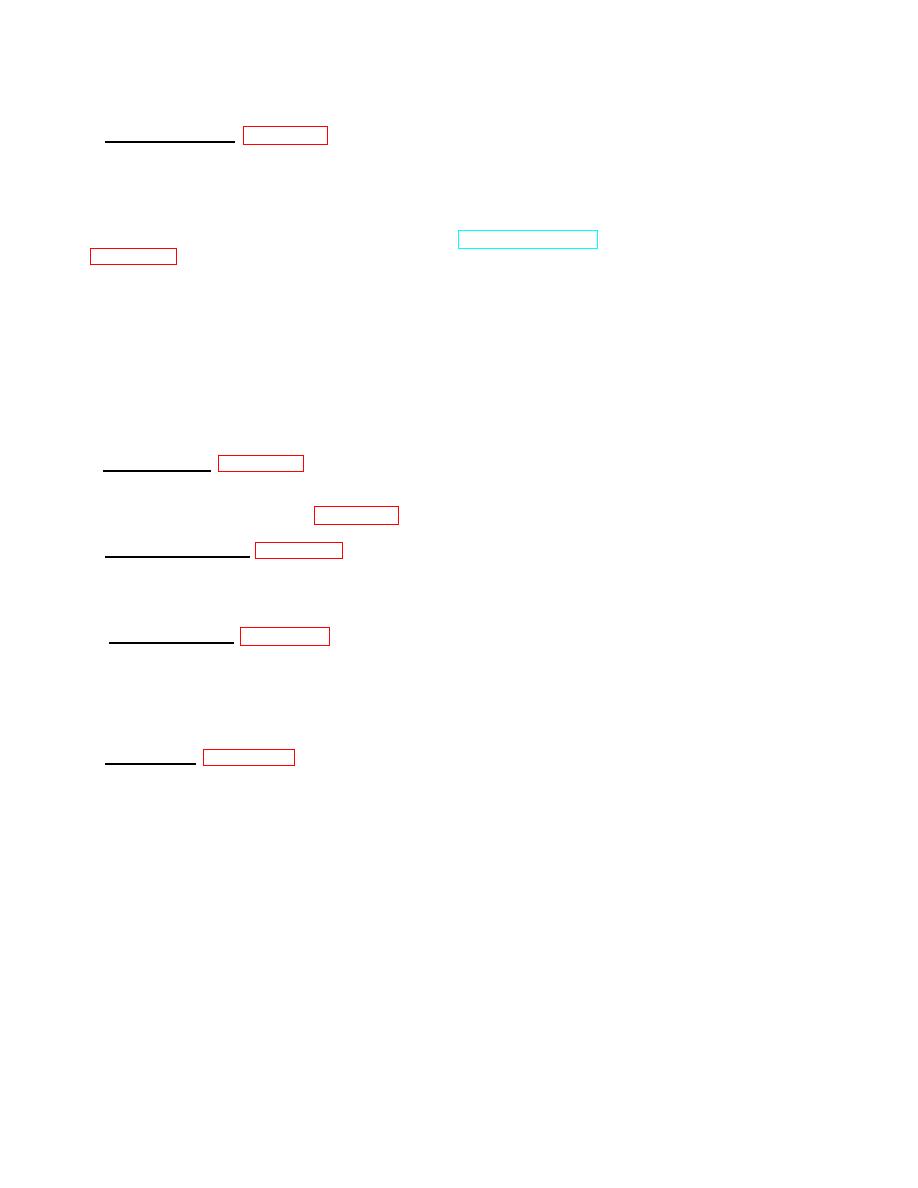
| Tweet |

Custom Search
|
|

|
||
 TM 55-1905-223-24-6
d. Pilothouse Interface. (FIGURE 1-6). The pilothouse is the primary control station for operating the bowthruster
waterjet. The pilot steers the bowthruster by right or left hand pressure on the joy stick control lever on the Bow Ramp,
Winch, Thruster Control Console. This lever activates steering gear hydraulics to turn the waterjet casing clockwise
or counterclockwise depending on the command. When released, the steering control joy stick returns to the neutral
position and the casing is mechanically locked at the angle shown on the thrust direction indicator. Engine and clutch
controls and displays are discussed in the bowthruster engine manual. Console controls and displays for the waterjet
are listed below. For additional details on the console refer to TM 55-1905-223-10 the operator's manual for the LCU.
(See Appendix A.)
Controls are:
Displays are:
SCHOTTEL UNIT ON (Key Switch)
SCHOTTEL UNIT ON
(Green) HYDRAULIC PUMP ON (Rotary Switch)
HYDRAULIC PUMP ON
(Green) STEERINC PORT STARBOARD (Joy Stick)
THRUST DIRECTION
(dial and LAMP CHECK (Push Button)
pointer)
HORN OFF (Push Button)
MIN OIL LEVEL HY-TANK
(Red lamp plus alarm horn)
MIN LUB OIL LEVEL SPJ
(Red lamp plus alarm horn)
e. Electrical Power. (FIGURE 1-7). The bowthruster waterjet requires 220- volt, 3-phase, 60 Hertz ac power
from the ship's electrical system into the water jet terminal box mounted over the hydraulic tank. The primary load
is the 20 horsepower hydraulic pump motor. Power is also required for sensors indicators, controls, and alarms.
Cabling for these functions is shown in FIGURE 1-7.
f. Upper Gear Assembly. (FIGURE 1-8). The waterjet mechanically couples the bowthruster engine to the jet
pump impeller. The upper gear assembly is an oil filled gear box mounted on the well cover containing a matched
pair of speed reducing bevel gears and associated bearings. The gears convert horizontal shaft input torque to
vertical shaft output torque. The output shaft drives the impeller as described below.
g. Waterjet Assembly. (FIGURE 1-9). This assembly includes the well cover plus associated waterjet
components within the well. The impeller shaft drives the rotor assembly to which the impeller wheel is bolted. The
entire assembly including the surrounding inlet and discharge casings is inclined 15 degrees to give a downward
slope to the waterjet discharge. This rake is established by the design of the steering tube. Within the tube are two
universal joints on the lower impeller shaft to accommodate this angular change. The impeller wheel spans the
inclined throat of the flared inlet casing and forces water upward and outward into the discharge spiral and nozzle.
h. Steering Gear. (FIGURE 1-10). The steering gear controls thrust direction by rotating the entire jet pump
casing. This casing forms a volute which turns as a unit within the well enclosure. Included are the downward flared
inlet to the inclined impeller wheel and the spiral configured outlet and discharge nozzle. Steering torque is applied
at the steering tube to which these components are attached. A bevel gear fitted to the upper collar of the steering
tube engages drive pinions of the right and left steering gear boxes. The tube and gear surround the impeller drive
components but turn independently. Matching hydraulic motors drive the input shafts of these right and left gear
boxes. The right gear box incorporates a geared takeoff to the rudder angle transmitter.
1-8
|
||
 |
||